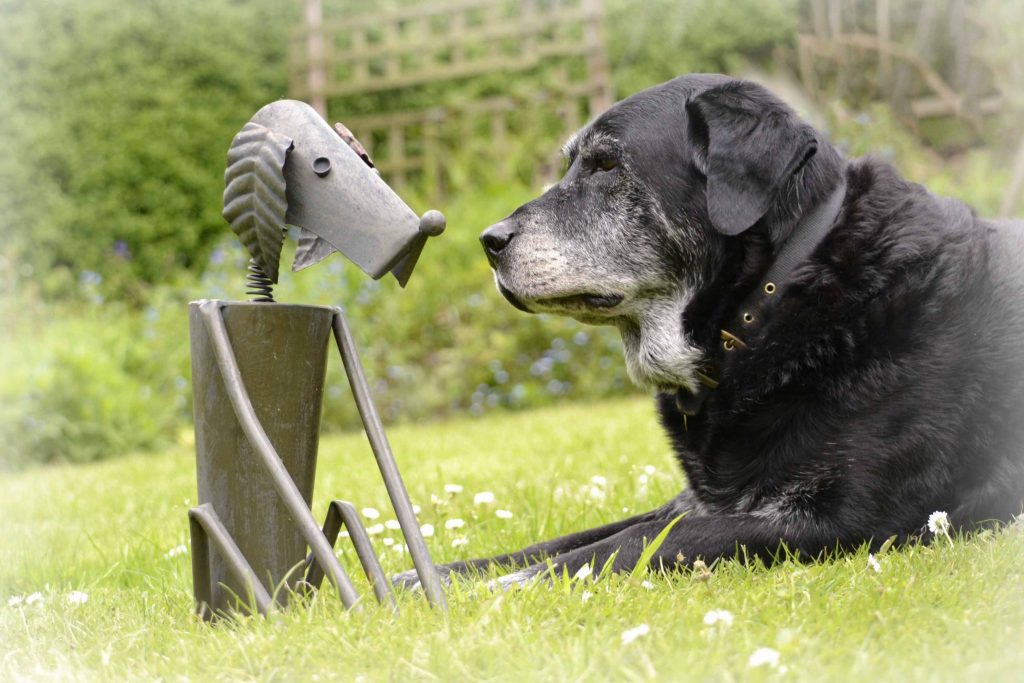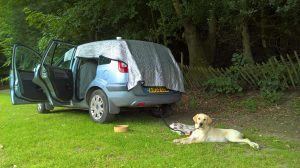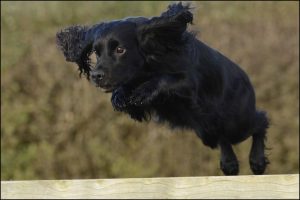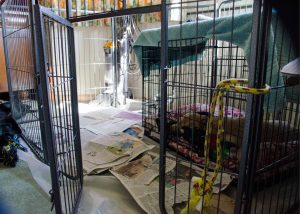DISCOVER DOGS 2017

No time to care for a dog? Please choose the breed on the left of this photo!
Discover Dogs
Just a reminder that Discover Dogs 2017 is being held 10am – 5pm on Saturday, 21 and Sunday, 22 October 2017 at the Excel Centre, London.
This show offers a huge amount of information on the numerous UK dog breeds (just over 200 in the UK currently) and all things dog-related.
Please note, however, that it is sponsored by dog food manufacturer Eukaneba, whose products do not rate well in comparison to other dog foods – please see the link below for more information on the food from this producer and also the www.allaboutdogfood.co.uk site in general which has very informative articles on canine nutrition and offers a very good critique of most dog food brands available in the UK.
www.allaboutdogfood.co.uk/dog-food-reviews/0094/eukanuba-adult-medium-breed
Please don’t accept dog food manufacturer’s clever marketing claims that their dog food is healthy – check any product ingredients before you consider feeding it to your dog.
Consider a Rescue Dog
Also please consider a rescue dog – there are many breed specific rescue centres as well as the better-known rescue centres. There are lots of lovely rescue dogs looking for a loving home but please be sure to ask the centre what temperament tests have been carried out and be sure that the dog breed or cross-breed that you choose will suit your home, lifestyle and knowledge of dog ownership – thank you.
Links to other Rescue Organisations
Link to Battersea’s rehoming process: www.battersea.org.uk/dogs/dog-rehoming-process
Link to Dogs’ Trust rehoming page: www.dogstrust.org.uk/rehoming
And, as above, please see the link on the Kennel Club site for Breed Specific rescue organisations: www.thekennelclub.org.uk/services/public/findarescue/Default.aspx
Sally Bartlett
www.co-operativecanines.co.uk
FIREWORKS AND DOGS – TIME TO START REDUCING YOUR DOG’S FEAR

Just a reminder to please take the time now to start on a behaviour change program for your dogs in good time before the firework (and Christmas) season starts.
Please see the link below to my previous article for advice on how to help reduce your dog’s anxiety with regard to fireworks (and other stressful noises).
Changing a dog’s perception of the noises related to the large variety of different fireworks takes daily behaviour change input which must be introduced very gradually and at the relevant level for your own dog’s needs. If you try to rush this sort of behavioural therapy you may make your dog worse so please start in good time and give your dog a happy 5th of November this year.
Please see the link to my previous article (below) and also contact me for further advice on how I can help you with your dog’s fear of fireworks or any other behavioural issue.
Sally Bartlett
www.co-operativecanines.co.uk
TRAINING DOGS TO LEAVE SHEEP

If you would like a chance to train your dog to leave sheep alone then please contact Ashdown Forest Conservators (see below) as I have just received the following email.
Contact Ashdown Forest Conservators to book your space
A few spaces have opened up for the Sheep Proof Your Dog Training on Tuesday 5th and 19th September.
Price: One dog per slot. £25 per dog, payable a month in advance.
Time: 20 minute training slots available throughout the day from 09:20 to 16:00
Location: Cats Protection, Chelwood Gate, Haywards Heath RH17 7TT
Please email the office for more details conservators@ashdownforest.org
We will need: Name, Dog Breed, Phone Number, Email, Time and Date.
Dog Law Regarding Livestock
Please note that under the Dogs (Protection of Livestock) Act 1953 your dog must not worry (chase or attack) livestock (cattle, sheep, goats, pigs, horses and poultry) on agricultural land, so even with a trained dog you should keep your dog on a lead around livestock or any area where you expect to find livestock. If your dog worries livestock, the farmer has the right to stop your dog (even by shooting your dog in certain circumstances).
For more information on dog law please see the Kennel Club’s dog law publication.
Sally Bartlett
www.co-operativecanines.co.uk
……………………………………………………….
This email should only be sent to those who have asked to receive it.
To unsubscribe, please visit http://www.ashdownforest.org/news/eNews.php enter your email and click the “unsubscribe” button. Thank you.
DOG TRAINING CLASSES REDHILL SEPTEMBER 2017

NEW 8 WEEK COURSE STARTS THURSDAY, 28 SEPTEMBER 2017
10AM, IN NUTFIELD, NEAR REDHILL, SURREY
Please contact (email or telephone) for registration form, location and price
Nutfield is just 5 – 15 minutes from Reigate, Redhill, Horley, Bletchingley and Godstone
Thursday, 28 September 2017 – Thursday, 23 November 2017: 10am – 11am
(No class on 2 November) Maximum of 4 dogs for this course so please book early.
SMALL CLASSES (MAXIMUM 4 DOGS) ENSURE YOU ARE ABLE TO RECEIVE ADEQUATE ONE-TO-ONE ATTENTION AND ALLOW YOUR DOGS TO LEARN IN A CALM OUTDOOR ENVIRONMENT.
ALL COURSES ARE EIGHT WEEKS (ONE HOUR PER WEEK)
- Classes are held in practical outdoor training environments
- Small classes allow me to give personal and effective advice on behaviour and training for each dog in the class
- Giving you a dog which is a pleasure to live with at home and in public.
HOW TO KEEP YOUR DOG COOLER IN THE CAR…

Keeping the car cool before we leave the campsite with silver mesh reflector
With the heat we have been experiencing this summer, I’ve recently bought a couple of items to help keep the car cooler for my young dog. I use these before I set off to reduce the temperature and also for very brief periods if I have to leave my dog in the car (but checking every few minutes that she is comfortable).
You do of course have air-con which can be left on when the ignition is off (but it will burn up battery power and your air-con will also have to work harder in a warmer car) so the other items purchased will help further still.
The Vent Lock
The first item I bought, recommended by a friend and fellow trainer, Nicky, who competes in agility and so does need to leave her dogs in the car, is the clever little gadget which allows your boot to be left open (a variety of sizes and so lengths of gap available). This allows more air flow through the car and so results in a cooler car.
When you are locking the boot closed you need to screw the vent lock into place and ensure it is in a vertical position so that the car lock can click over the top. If you leave it horizontal then the boot cannot latch onto it.
With regard to removing the vent lock, I had difficulties at first but discovered the way to do this is to hold the boot and pull it as far as you can towards you before using your key to unlock the boot. Once you do this then the boot releases immediately. Practise this before you put your dog in the boot!
Please note that if using a vent lock with your dog in the boot area but without your dog being crated you must make sure that the gap created is safe for the dog. That is, so that he or she cannot escape or get stuck trying! Also it is advisable to only use a short vent lock in a public place – so that the less intelligent and honest of our own species are not tempted to put their hands in! Even the best natured dog may react aggressively to this sort of behaviour so please be aware that even with the shortest vent lock that fingers could be put in the boot.
www.ventlock.com/tailgatelock.php
Silver Shade Mesh Reflector
The other item I bought is the silver shade mesh reflector (www.theanimalarm.com/product/silver-shade-mesh-tarppanel). This is a reflector – but with a difference – in that because it is a mesh, it has plenty of room for air to flow through, so keeping the vehicle cooler than the cheaper more solid reflectors. Not cheap at £75 for a size to cover most of a medium-sized car but well worth it.
A padlocked Crate
To allow even more air flow, use a secure crate in the boot and padlock your dog into this, which means you can leave the boot open or, even better, use with a larger size vent lock (as above)). When padlocking your dog in please ensure you remember the code, or if a key type that you have a spare key. Barjo are a well-known quality provider of dog crate products.
Also note that boots left open with padlocks are really only suitable for places which are a lower risk environment (eg agility shows where everyone looks out for each other and where access to dogs is not open to the general public) or where you are supervising your dog (eg for myself, whilst putting up my tent next to the car).
The obvious!
Don’t forget to try to find a place in the shade and consider how the sun will be moving around to ensure your car remains in the shade for as long as possible.
Even better than leaving your dog in the car, get some help with training to ensure you have a well mannered and happy dog which you can take everywhere with you. Please call me (07752 427804) or contact me through my website for help with training.
Safety (again)
DOGS DIE IN CARS – THESE PRODUCTS ONLY REDUCE THE TEMPERATURE BUT CANNOT BE GUARANTEED TO KEEP THE CAR COOL ENOUGH TO LEAVE A DOG FOR LONG.
DOGS CAN DIE WITHIN A FEW MINUTES IN AN OVER-HEATED CAR – PLEASE CHECK UP ON YOUR DOG CONSTANTLY AT SHORT INTERVALS.
AS ABOVE, DOGS CAN BE STOLEN FROM CARS SO EVEN IF YOU PADLOCK YOUR DOG IN THE CAR, YOU ARE STILL TAKING A RISK BY LEAVING YOUR DOG IN THE CAR ALONE SO PLEASE BE VERY CAUTIOUS.
HAVE A BOWL OF CLEAN FRESH WATER AVAILABLE TO YOUR DOG AT ALL TIMES.
© 2017 Sally Bartlett
www.co-operativecanines.co.uk
REFRESHING SUMMER DOG TREATS

Summer is well and truly here and so a few ideas for some refreshing summer dog treats using your ice cube trays.
Please make sure that whenever you introduce anything new to your dogs that you do so just a tiny bit at a time to ensure it does not upset them.
First, and the simplest, just give a plain ice cube for your dog to enjoy crunching on.
Second, the above photo shows a tray of ice cubes but before filling the tray with water I have added chunks of apple or carrot so that your dog can enjoy a nice cooling crunchy ice cube and then a surprise centre for him or her!
You can fill the cube with whatever your dog likes (see my previous article on pet poisons and the link to the British Veterinary Association’s guide to pet poisons to ensure you only give safe titbits to your dogs).
Thirdly (and this is one that I tend to steal for myself!) mix yourself a fruit smoothie and freeze it in ice cubes (or a kong). You can do this with just fruit juce or you can add a small amount of yoghurt – just a teaspoon or two to add a bit of luxury. As above, be sure to introduce to your dog a little at a time to ensure no upset stomachs.
With thanks to Canine Partners for the latter two ideas (my own Canine Partner puppy (Vogue) loves these) – for more information on this great charity that trains dogs as assistance dogs for disabled people please see: www.caninepartners.org.uk
Enjoy the summer ….
© 2017 Sally Bartlett
www.co-operativecanines.co.uk
07752 427804
DOG INSURANCE POLICIES – A GUIDE

Dog insurance policies give you peace of mind for
illness, injury and third party liability cover
As ever with insurance policies, there are a myriad of options for dog owners so I have put together a brief guide on dog insurance policies to help you ensure your dogs are covered in case of illness or injury:
Medical claims
These days, the majority of owners choose to take out an insurance policy for their dogs, as they are aware of the ongoing need during their dogs’ lives for medical cover. What you may not be aware of:
- It is wise to spend time ensuring you choose the right insurance policy before you even get your dog. This is because once your dog has experienced a medical condition it becomes a ‘pre-existing’ condition and is usually excluded from your policy, leaving you to pay the cost of medical condition.
- Most policies do not give cover immediately so please do not wait until your dog is ill.
- Even if you have several weeks’ cover included when you buy a puppy, bear in mind the points above, particularly if you are going to change to another insurer.
- Some insurance policies require you to pay not just an excess per claim but also a percentage of the remainder of the total vets’ fees.
- Even with a ‘life-time’ policy the premium, the excess and the percentage of total vets’ fees (if applicable to your policy) may be increased as your dog ages or as you claim.
Third Party Liability
Some dog owners are still unaware of the necessity for third party liability cover, which they may lack if they do not take out a suitable policy. Without this cover, owners could find themselves having to settle claims out of their own pocket for any claim against them relating to injuries or damage to a person or their property.
In this day and age, where dog law puts increasingly more pressure on dog owners to have their dogs under control, it is a wise owner who ensures their dogs are covered not just for medical requirements for also for Third Party claims – see the Kennel Club’s Dog Law guide.
Your own household insurance might cover you but not all policies do, and some will only cover you on your own property but not in public.
Another method of receiving cover for third party liability insurance is to become a member of the Dogs Trust. For more details please see:
www.dogstrust.org.uk/get-involved/membership
www.dogstrust.org.uk/get-involved/membership/faqs
Useful links for more information on taking out a pet insurance policy
www.abi.org.uk/Insurance-and-savings/Products/Pet-insurance
Association of British Insurance Pet Insurance Guide
www.thekennelclub.org.uk/media/66386/insurance.pdf
Link to the Kennel Club Pet Insurance Guide for Dog Owners
www.bva.co.uk/You-and-your-vet/BVA-advice-leaflets
British Veterinary Association (BVA) Benefits of Pet Insurance
You may also be interested in my previous articles regarding your dogs’ health:
- Snake bits and insect stings to dogs
- Harvest mites and dogs
- Parasite risks to dogs travelling abroad in Europe
© 2017 Sally Bartlett
www.co-operativecanines.co.uk
THE YELLOW DOG PROJECT

You may have seen dogs out and about dressed in an array of yellow paraphernalia! The Yellow Dog Project is an interesting and potentially very useful idea. Basically, if a dog has a yellow collar, harness, lead, or has a yellow ribbon tied to the lead, then it may indicate that they need space from other dogs/people. This is certainly a real problem for some TCBTS members’ clients!
The campaign was adopted in the UK as Yellow Dog (www.yellowdoguk.co.uk) as a registered charity in 2013 by NarpsUK, a membership organisation for pet sitters and dog walkers. There is another site called www.spacedog.org.uk that is also promoting the idea. Essentially the Yellow Dog scheme has developed as recognition of how difficult it can be for some dogs when other dogs rush up to them.
The Yellow Dog campaign clearly states that dogs might need space for a number of reasons, specifically: they maybe: ill, old, hurt, in season, in training, nervous, have had bad life experiences, the person walking him may be nervous of other dogs or they may be an unknown quantity to new owners. The www.spacedog.org.uk site doesn’t appear to give any guidance as to use.

However, the Yellow Dog website is very clear that it should not be used for dogs known to be aggressive and it strongly states that dogs which bite should be muzzled; so the Yellow Dog is not for dogs known to bite but could be used for dogs that bark and lunge. There are obvious legal implications if the yellow dog is used for dogs with a bite history.
The Yellow Dog website is not clear as to whether the yellow label applies to dogs when off lead as well as on lead. If you know your dog to be potentially aggressive but let them off lead with a yellow ribbon/bandana on their collar and there is an incident, the yellow label might work against you in court as it indicates you had prior knowledge that this might happen but had not taken steps to mitigate it, whilst if you had your dog on the lead with a yellow label and another dog rushes up and there is an incident then the yellow label might work in your favour in court as it could be seen to have been used appropriately in order to avoid such an incident.
In addition to the Yellow Dog scheme, these days there are lots of leads, collars, harnesses, etc, in different colours purporting to mean different things and whilst an effective scheme would be massively beneficial for owners and their dogs any scheme needs clarity and unity and also promotion, and where better to start than at the vets!
If you see a dog with a YELLOW ribbon, bandanna or similar on the leash or on the dog, this is a dog which needs some space. The Yellow Dog campaign believe that by making the yellow ribbon an accepted representation throughout the UK that a dog needs space will benefit everyone and make dog walking a more enjoyable experience.
Article written by Canine Behaviour and Training Society Member: © Claire Kirby, 2017
www.4-legs-good.co.uk (Shropshire)
For dog training and behavioural advice in the Redhill, Surrey area please contact Sally Bartlett at:
IS YOUR DOG INTELLIGENT?

A dog selectively bred to do its work independently of its handler may not be the most obedient
but is far from lacking intelligence …
What can affect our dogs’ performance?
Most of us (I hope) think our dogs are wonderful but occasionally I meet someone who believes their dog is not so bright. I, of course, always defend the dog as their abilities and performance will depend on a number of factors:
- Their genetic instincts and physical capabilities (as humans have selectively bred them for our own specific requirements).
- The learning and socialisation opportunities offered to them as a young dog whilst with the breeder.
- The learning and socialisation opportunities offered by their owners.
- The clarity and consistency of their training and what is required to carry out any particular ‘intelligence test.’
Please also see below for more considerations as to what other factors influence our dogs’ performance.
So our perceived intelligence of dogs will vary in what we as humans consider intelligence. This has always been a subject of interest to me and I recently carried out some research as part of my studies into canine behaviour and the often complex causes and solutions of dogs’ behaviour.
The theory of multiple intelligences
With humans there is a ‘theory of multiple intelligences’ and I believe this is also most relevant to dogs. With both humans and our canine friends, researchers would have to take into account the background of the individuals concerned and how they have been raised.
With people, for example, it is proven that usually children from a supportive background and with a good education will do better than those from an under privileged background and lesser education opportunities. The same is certainly true for dogs with regard to their early formative years with the breeder and in their new home, both with regard to socialisation and environmental enrichment – beware of the breeder who has not carried out suitable socialisation and given the puppies an interesting environment in which they can learn and play.
Scott and Fuller – study of behaviour related to genetics
Scott & Fuller (1965) in their well known book entitled, ‘Genetics and the Social Behaviour of the Dog,’ state in their summary of the chapter on ‘Training’ that it is extremely difficult to devise a test which measures only one simple capacity. They also state some of the differences which affect testing, including each breed’s genetic traits, such as Cocker Spaniels having a tendency to naturally sit, Wire Haired Terriers using aggression, the Basenji’s natural resistance to restraint, and the Sheltie’s tendency to ‘crowd’ in close to the handler. These were for their training, rather than problem-solving tests, but emphasises the difficulty, as they point out, of any test which aims to measure one ability.
Scott & Fuller also noted that some dogs have a natural physical or mental ability to succeed. In a ‘motor-skill’ tests where dogs had to jump on boxes and a bridge to gain access to food the Basenjis had the natural physical ability to jump higher but were far more wary than other breeds of the new objects in their enclosure. Cocker Spaniels however showed no fear and although less physically able to jump as well as the Basenjis they showed no fear and their motivation was also noted as being high.
Multiple Intelligences in humans and how to apply that to dogs
With regard to the theory of multiple intelligences in humans, I looked at a paper by Howard Gardner and Thomas Hatch ‘Multiple Intelligences Go to School: Educational Implications of the Theory of Multiple Intelligences’ (1989) to see what the human intelligences are considered to be. This paper listed:
Logical-Mathematical
Sensitivity to, and capacity to discern, logical or numerical patterns; ability to handle long chains of reasoning.
Dogs can be very good problem solvers but also they appear to have a good grasp of basic counting abilities. Stanley Coren stated that dogs can count and that belief is supported both by owner observations and by test results (www.psychologytoday.com/blog/canine-corner/201103/do-dogs-know-mathematics).
The simplest explanation of Coren’s as to why a dog may be required to count is that it is a useful ability, for example, for a female to know if all of her pups are present.
Or, in the case of my current puppy, I have always fed her meals in two parts to give me more training opportunities at mealtimes and now she is used to having more than just one bowl of food each mealtime and can definitely count- looking for the second helping each time!
Linguistic
Sensitivity to the sounds, rhythms, and meanings of words; sensitivity to the different functions of language.
Dogs are naturally good communicators, usually offering us excellent clues via body language and oral communication. They also pick up on our body language and tone of voice.
Musical
Abilities to produce and appreciate rhythm, pitch, and timbre; appreciation of the forms of musical expressiveness.
Dogs are aware of the different pitches of a dog whistle and the signal given. That is why dog owners should preferably use the same pitch whistle and signal for their dog. Some dogs also seem to enjoy music – although that is my own unscientific opinion!
Spatial
Capacities to perceive the visual-spatial world accurately and to perform transformations on one’s initial perceptions.
Dogs are very good at this as they can judge distances very accurately in some cases. For example a dog can ‘snap’ at a person or animal and give the impression that he meant to bite but he will have carefully judged this distance, usually to avoid injury. However, not so good at getting a large stick through a narrow gap!
Bodily kinaesthetic
Abilities to control one’s body movements and to handle objects skilfully.
Dogs are very good at this when in good health and variations in breed make a huge difference.
Interpersonal
Capacities to discern and respond appropriately to the moods, temperaments, motivations, and desires of other people.
Dogs seem masters of this intelligence, and very tuned in to their owners’ moods. If observation is one of the methods of studying behaviour then there are many first-hand observations by owners of their dogs’ reactions to their emotions. This may be a dog which comforts an owner who is upset or, at the other end of the scale, a dog which reacts aggressively to a handler who is acting aggressively.
Intrapersonal
Access to one’s own feelings and the ability to discriminate among them and draw upon them to guide behaviour; knowledge of one’s own strengths, weaknesses, desires, and intelligences.
Dogs vary very much in this intelligence and their behaviour is usually arrived at by genetic make-up and learned experience. Most are aware of the ‘knowledge’ of their own status and physical strength, by way of their status in the family/canine packs and also of any physical games such as playing tug.
Multiple Intelligences in Dogs
I found an article relating to research, again reference Coren, where he had reviewed many studies to conclude that dogs do have the ability to solve complex problems and are more like humans and other higher primates than previously thought.
With huge differences as we know in breeds, Coren stated that the intelligence of various types of dogs does differ and the dog’s breed determines some of these differences.
He went on to say that there are three types of dog intelligence:
- Instinctive (what the dog is bred to do) (and I would add to this that it must involve both the mental ability of the dog and of course its physiology which will result in different physical capabilities)
- Adaptive (how well the dog learns from its environment to solve problems) This would also have to consider the environment in which a dog had been raised since birth, as lack of environmental enrichment during its life will have affected the learning process
- Working and obedience (the equivalent of ‘school learning’). See notes below on what would affect a dog’s ability to perform in this area.
Obedience intelligence of dogs
According to Coren, data from 208 dog obedience judges from the USA and Canada showed the differences in working and obedience intelligence of dog breeds. The order of breeds (shown highest to lowest) was:
- Border Collies
- Poodles
- German Shepherds
- Golden Retrievers
- Dobermans
- Shetland Sheepdogs
- Labrador Retreivers
However, intelligence is hard to define because there are many different reasons why a dog may not come out well in the ‘working and obedience’ category. These include:
- Is the dog able to understand the handler clearly?
- Is the dog motivated to comply with the required commands?
- Why is the dog motivated to comply with commands – many obedience competitors do not feed their dogs for a long period before competition to enhance the dog’s motivation to comply?
- On the day tested was the dog at the best of its ability?
- Some breeds are more likely to ‘question’ the command of a handler and others to comply. .
A thought about our own abilities
So please, the next time someone suggests their dog may not be overly bright, you can point out the reasons which may be affecting their dog and ask them also to consider how dogs might consider their owners a bit dim due to our dreadful lack of scenting ability, how birds must surely think we are extremely stupid to walk instead of fly and how fish must be shocked that we need to carry large tanks of oxygen …
A well known quote (thought to be from Albert Einstein) is worth remembering:
“Everybody is a genius. But if you judge a fish by its ability to climb a tree, it will live its whole life believing that it is stupid.
The question I have for you at this point of our journey together is,
“What is your genius?”
More importantly, what is your dog’s genius
(not Albert Einstein)…
© Sally Bartlett
www.co-operativecanines.co.uk
07752 427804
PUPPY PENS – A HOUSE TRAINING ESSENTIAL
Puppy pens are one of the most essential pieces of equipment for house training your puppy and, used correctly, your puppy should be very happy to settle in the pen, and hopefully also to go inside his/her crate (the crate can be placed inside the pen) – see below.

Make sure you place your pen and crate in a place where your puppy will be happy – this usually means placing in an area such as the sitting room or kitchen, where your puppy will have plenty of company but, of course, please ensure that they are also able to get peace and quiet and so you will need to tell all household members and visitors to leave the puppy alone when they are resting.
Also think about how hot or cold the area is and what suits your puppy and what is safe, ie do not leave in the glare and heat of the sun all day or in any cold draughts.
Initially I put a plastic sheet under the whole pen (with the ends outside of the pen so that the puppy could not easily chew the sheet) and also put newspaper down in case there are any toileting accidents but please don’t think this is a reason to leave them for hours without giving them the chance to toilet outside. The less they toilet indoors (even in their pen) the quicker they will learn that toileting should be done outside. Set your alarm clock/kitchen timer/mobile and make sure you give your puppy plenty of regular toilet opportunities outside.
Re the plastic sheet and newspaper, always supervise until you are sure your puppy is safe to be left with these without eating them.
You can also leave some chew toys and soft toys in the pen with them to keep them occupied (ensure they are supervised with any new items so that you know they are safe) and also put some water in the pen – I used a metal clip-on bowl but this can’t be seen clearly in the photo above but any dog bowl will do.
Of course, in the crate you will want to put some very comfortable bedding for them so that they are happy to go to bed and remain there – you will want them to be nice and comfy because that way you might also get a decent night’s sleep!
The pen I bought was from Bunny Business and I got it from Amazon (www.amazon.co.uk/gp/product/B00LS9HJLA/ref=oh_aui_search_detailpage?ie=UTF8&psc=1). There are three sizes and the one I got was the medium and had eight panels which can be put up separately and pulled into the shape that suits your set-up. With the spare panels I used these to block off areas where I didn’t want my puppy to go and I wedged them into palce with various other household items – not 100% secure but a good deterrent which meant the shoes I had blocked off were left alone and so bad habits avoided (so far!)
My puppy is a Labrador x Golden Retriever and at nearly 4 months old I can still leave her in there secure in the knowledge that she cannot get out and that she is very happy both in her crate and her pen area. I also put an extra bit of bedding in the pen area during the day as I like to give puppies another option as to where they can lie. I always make sure the crated area has her favourite bedding, however, as I want her to be happy to go into her crate and stay there over night. At first, I left the crate door open but once I knew she was happy and comfy in her crate I shut her in over night and sometimes for short periods when she needed a rest during the day.
Re the entrance door panel, I turned this upside down so that my small puppy did not have to step over what is quite a large step and this is still upside down with her at nearly 4 months old and no chance of her hitting her back on the top yet. When she is bigger I will turn the entrace up to the normal way.
Please note that no puppy should be left for very long periods of confinement but the puppy pen set-up is useful for when you can’t supervise and whilst you are house training your puppy and when you need to ensure your puppy will not chew household items. Please therefore also make sure you do have your puppy with you in other areas of the home but under your supervision so that you can avoid toileting accidents and damage to your property (and keep your puppy safe).
You may also be interested in my article on puppies that play bite and chew – please follow link to my previous blog article.
Sally Bartlett
© Co-operative Canines Dog Training & Behaviour
